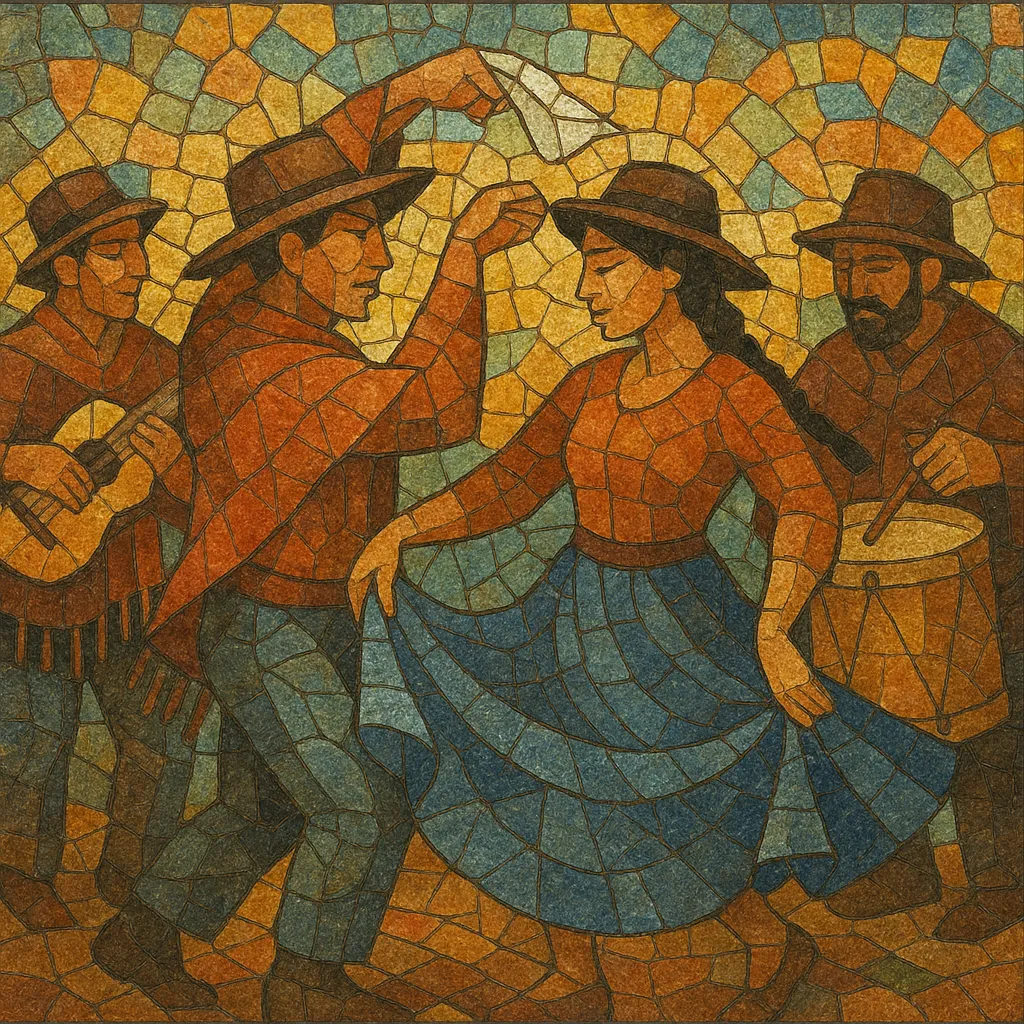Bailecito is a lively Andean couple dance and song form that took shape in the Altiplano and Northwestern regions of South America, especially Bolivia and Northern Argentina. Characterized by buoyant rhythms, short strophic melodies, and a light, courtly character, it is commonly performed with charango, guitar, quena or panpipes, and bombo legüero.
Musically, bailecito often plays with the Andean sesquiáltera (the natural alternation or superposition of 6/8 and 3/4), giving it a graceful swing suited to small, circular dance figures. Melodies tend to be diatonic with frequent pentatonic turns and modest ranges, while harmonies are simple and folk-rooted, creating a cheerful, flirtatious mood that fits festivities and social gatherings.
Bailecito emerged during the 19th century in the Andean highlands, particularly within the cultural orbit of present‑day Bolivia and the Northwestern Argentine provinces. It reflects a meeting point between Indigenous Andean musical practices (scales, instruments, and communal dance) and Iberian courtly dance-song traditions brought in the colonial period. This fusion yielded a light, elegant couple dance supported by portable string and wind instruments well-suited to rural festivities.
As folkloric ensembles and local radio spread Andean music across borders, bailecito established a recognizable repertoire and dance protocol in Bolivia and Argentina. The sesquiáltera feel, charango and guitar textures, and quena/siku timbres became signature elements. In Argentina’s Northwest, bailecito nestled alongside zamba, cueca, and carnavalito in peñas and festivals, while in Bolivia it appeared in urban folk arrangements and student estudiantinas.
The mid‑century folk revival and subsequent nueva canción movements brought bailecito into concert halls and recordings. Bolivian and Argentine groups arranged bailecitos for larger ensembles with refined vocal harmonies and charango-led textures. The piece also entered classical recital programs through stylized art-song arrangements, showing its adaptability while retaining its danceable core.
Today, bailecito remains a staple at Andean folk festivals and cultural events. Ensembles combine traditional timbres with modern sound reinforcement, and some musicians incorporate subtle harmonic expansions while preserving the characteristic rhythmic buoyancy. The form continues to serve as a social, celebratory vehicle that connects contemporary audiences with Andean heritage.


